When you think of pork, the first dish that comes to mind would probably be bacon or even barbecued baby back ribs. However, the Asians have a different idea of how to utilize this versatile meat.
Known for using every part of the animal, Asians have been revolutionizing the way we eat pork across the continent. From the usual pork buns to the less usual pig’s feet stew. So drop your bacon (just while reading this article) and find out how some of Asia does pork – from head to toe.
Ears – Thai Pig Ear Salad Yam Hu Mu
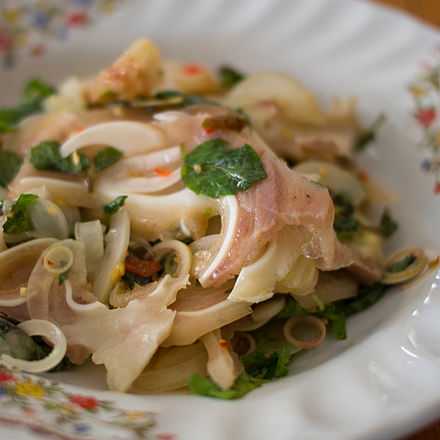
Photo courtesy of wikipedia.com
Usually seen as a part to waste, the ears provide this dish with an unusual crunch from the cartilage of the ear. The yam hu mu dish is a tangy salad, served with boiled pig’s ears. Usually, the salads also contain lime juice, shallots, lemongrass, fish sauce (a Thai staple) and sugar.
Snout – Filipino Sisig
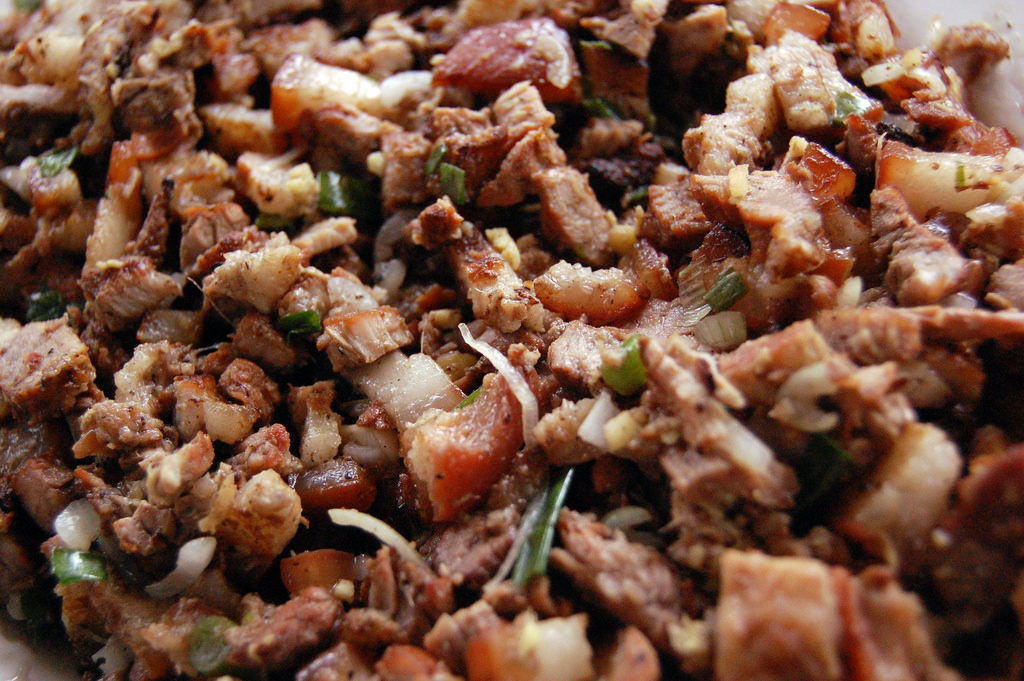
Photo courtesy of @bigberto on flickr.com
Sisig is a famous appetizer dish from the Philippines famously known for being served with the meat from the pig’s snout. Nowadays, there are variations of the dish as different meats are used in the dish including squid and tuna. The meat is used as a binder with peppers, vinegar, salt, and other herbs to create the exquisitely exotic, spicy and fatty dish.
Brain – Thai Aeb Ong Aw
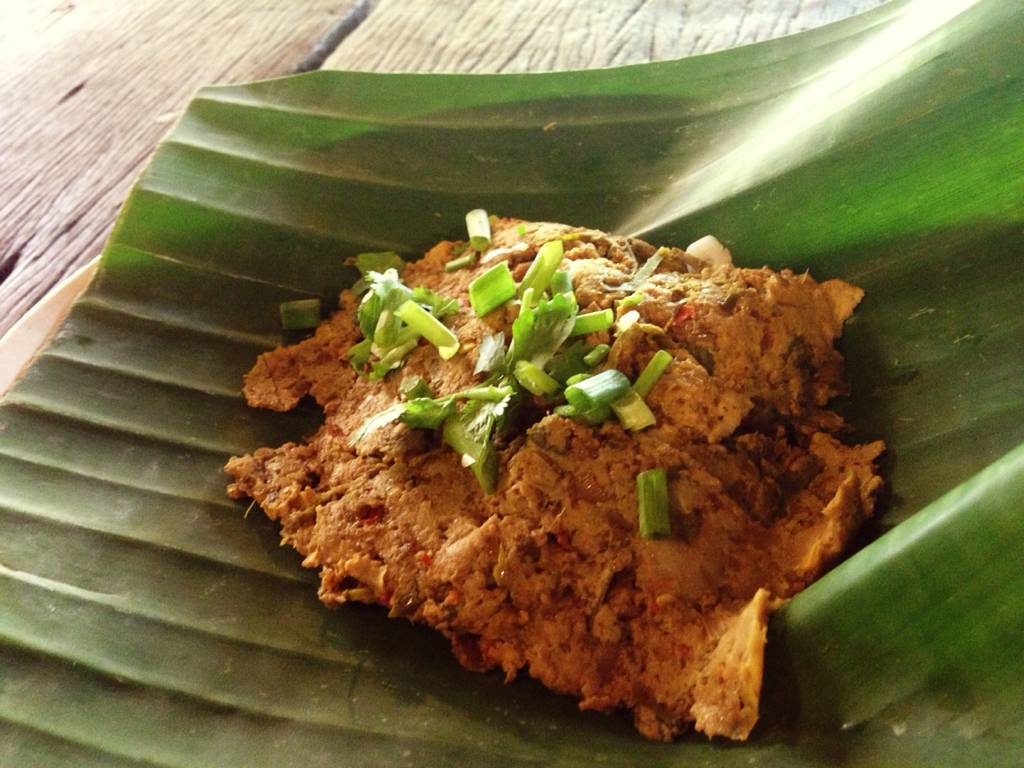
Photo courtesy of wongnai.com
Aeb Ong Aw is a traditional dish from the northern areas of Thailand consisting of a blend of pig’s brains and curry paste wrapped in a banana leaf and cooked over an open flame. The brain is blended with shallots, ginger, kaffir lime leaves, a bit of lemongrass, a tinge of shrimp paste and some dry chilies to add to the typical Thai spice of the dish. Disclaimer: eating brains doesn’t make you smarter.
Belly – Chinese Crispy Roast Pork Belly
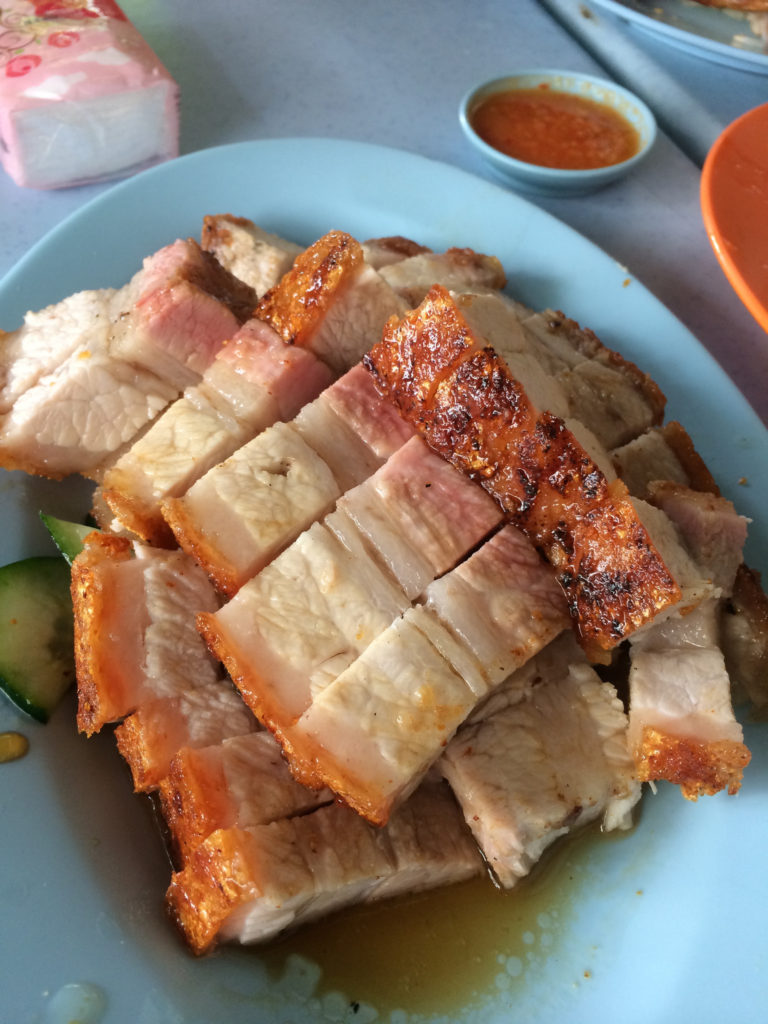
Photo courtesy of @hendry on flickr.com
This Chinese dish is sure to have your taste buds sing as your teeth bite into the crunchy layer of skin into the fatty and tender goodness of the pork belly. Though the dish is a Chinese recipe, it can be found in many countries across Asia, each providing the eaters of this dish with the same great oily happiness.
The belly is usually roasted as a whole slab before being cut up into bite-size pieces of deliciousness and can be served alone as an appetizer or with rice as a main dish.
Loin – Japanese Tonkatsu/Rosu-katsu
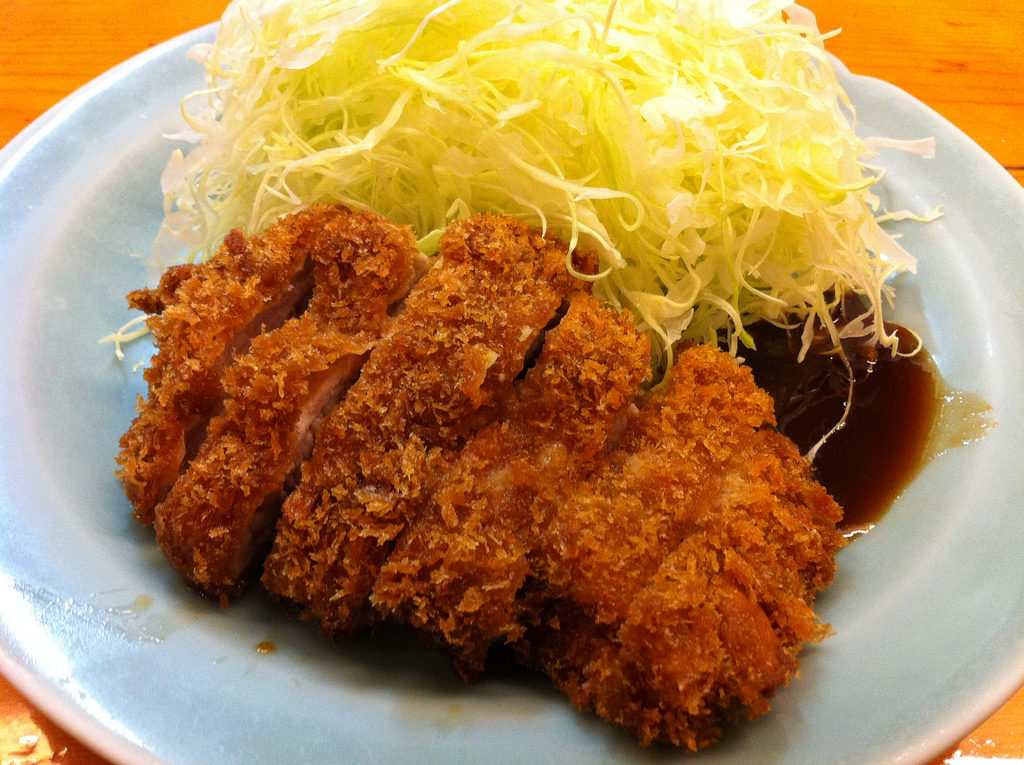
Photo courtesy of @cchen on flickr.com
Tonkatsu is the Japanese term used for deep-fried pieces of breaded pork, but more specifically, rosu-katsu refers to deep-fried pieces of breaded pork loin, which tantalizes the taste buds with a crunchy and juicy bite.
Rosu is the more famous cut of tonkatsu as it is juicier and more tender, but also the fattier choice. The dish can be seen as the Japanese schnitzel but the taste of the panko (Japanese breadcrumbs) and the pork itself is not to be compared with its German cousin, schnitzel. Restaurants all around Japan specialize in this dish so it is not to be missed on a trip there.
Intestines – Chinese Pork Intestine Stew
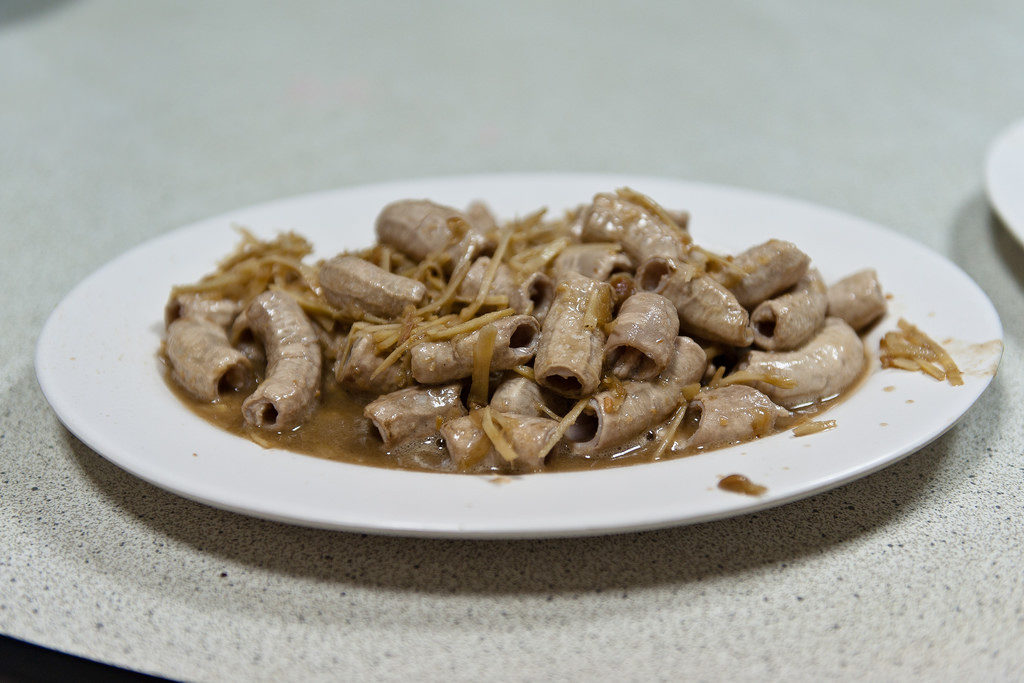
Photo courtesy of @macabrephotographer on flickr.com
Sure, you learn about how gross intestines can be in biology class but the Chinese see it as one of the most revered parts of the pig. Found in noodle soups and stews, the intestines provide chewiness and act as a condiment to many dishes in China, Singapore, and Malaysia.
Most famously, the intestines are put into a stew with star anise, ginger, soy sauce, and some rice wine. The stew is then either served on its own or as a topping for noodles. Pictured above is the Hakkanese style of stewed intestines.
Ribs – Korean Wang Galbi

Photo courtesy of Steve Bozak on flickr.com
This is the Korean take on your favorite baby back ribs. Until recently, Korean cuisine has focused on beef so the creation of pork dishes is seen to be a relatively new notion in Korean culture.
However, this pork dish has taken the spot of one of Korea’s favorite barbecue dishes. Slathered in gochujang (Korean hot pepper paste) and some brown sugar OR homemade ganjang-based marinade, the slab of ribs is left to roast in its own perfect juices. It should be illegal to use anything else but your hands to eat this dish.
Feet – Sichuan Braised Pig Trotters
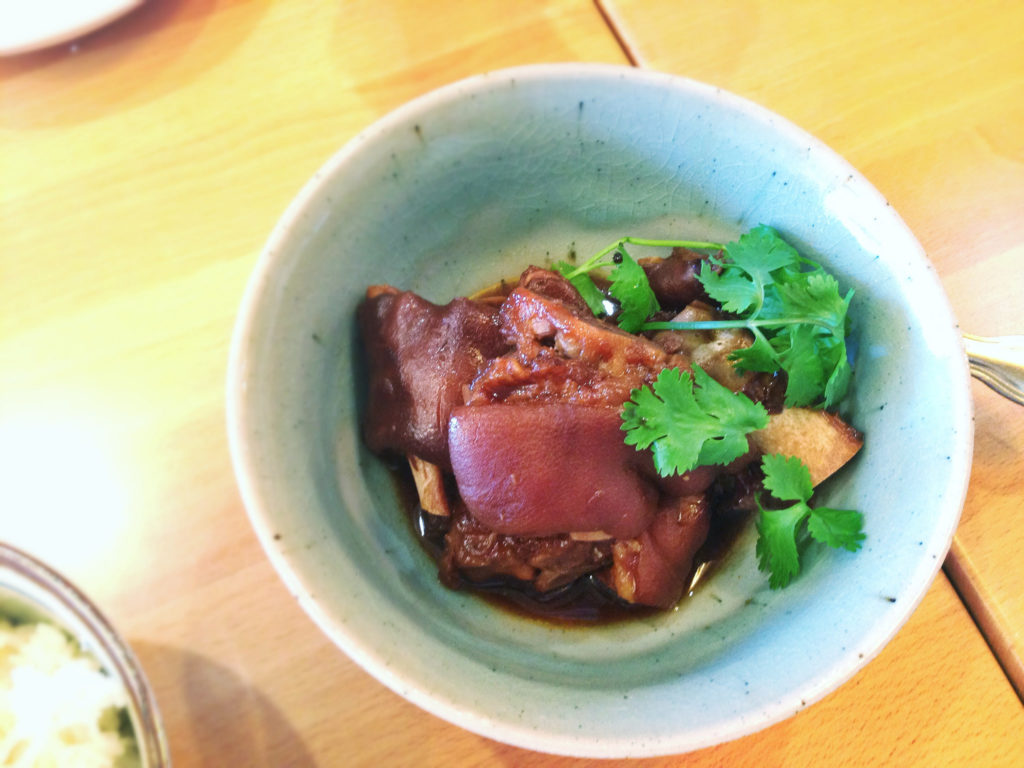
Photo courtesy of T.Tseng on flickr.com
Otherwise known as red braised pig trotters, the Sichuan dish is famous for its striking color and its more than tender pig trotters. The dish takes almost two hours to cook but the wait is guaranteed to be worth it with its amazingly soft and delectable bite.
Not only does it taste good, but the collagen in the pig’s foot is seen to be a huge beauty food in China with people eating it for the benefits the collagen has on our skin (some go as far as to make beauty masks out of the collagen from a pig’s foot). But for now, let’s just get mesmerized with this beautiful dish and worry about face masks later.
Okay, why not the whole pig – Indonesia’s Babi Guling
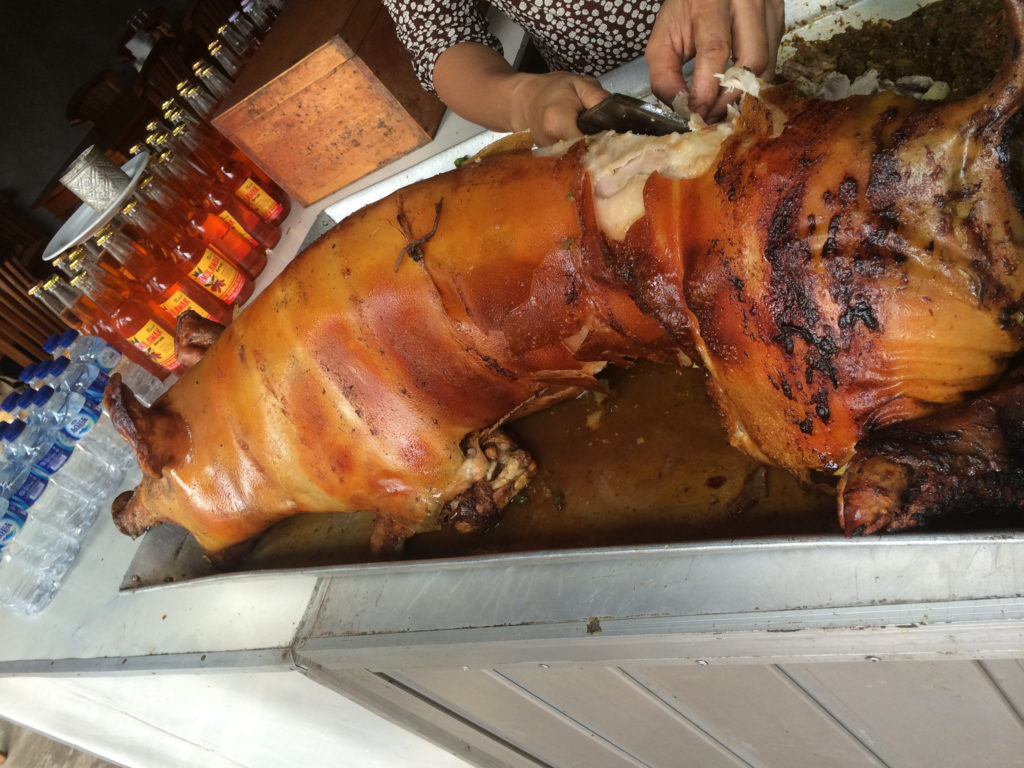
Photo courtesy of @hendry on flickr.com
This dish may seem very odd coming from the country with the world’s largest Muslim majority population in the world, however, on the Indonesian island of Bali where most of the inhabitants are non-Muslim, this dish has taken the streets by storm with countless restaurants specializing in this dish and some street vendors even selling this special dish on the side of the roads.
Tourists travel from their beach resorts to the inner parts of the island just to get a taste of this tender roasted suckling pig marinated with ginger, garlic, and turmeric. The dish is famous with the kids because of its crispy skin but it is assured that people of all ages would enjoy this one-of-a-kind pork dish found on the beautiful island of Bali. It is most definitely enjoyed with some rice, vegetables, chili peppers and the great Balinese views provided by Mother Nature.


